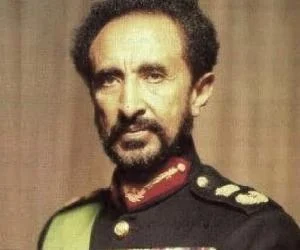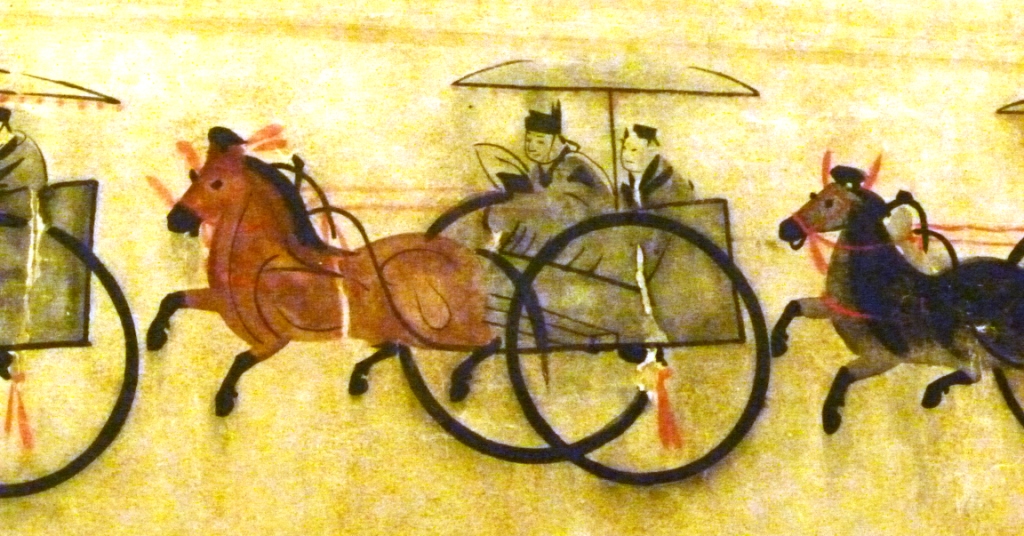|
1960 Ethiopian Coup D'état Attempt
The 1960 Ethiopian coup d'etat attempt ( Amharic: የታህሳሱ ግርግር) was an attempted coup d'etat and a series of shootouts in the Ethiopian Empire on 13 December 1960 against Emperor Haile Selassie. The Council of the Revolution, four conspirators led by brothers Germame Neway and Brigadier General Mengistu Neway, commander of the ''Kebur Zabagna'' (Imperial Bodyguard), sought to overthrow the Emperor during a state visit to Brazil in order to install a progressive government. The coup leaders declared the beginning of a new government under the rule of Haile Selassie's eldest son, Crown Prince Asfaw Wossen, that would address the numerous economic and social problems Ethiopia faced. The Council gained control of most of the capital city, Addis Ababa, and took several ministers and other important people hostage. After its initial success, the majority of the military and populace quickly aligned against the coup, and by 17 December loyalists had regained control ... [...More Info...] [...Related Items...] OR: [Wikipedia] [Google] [Baidu] |
Opposition To Haile Selassie
Opposition to Haile Selassie relied largely of internal administration of his country. While Haile Selassie made attempt to modernize the country and brought to global power since Italy's occupation in 1936–41, the later administration met with negative public attitude especially among educated people in universities and peasants. Several coups made to overthrow Haile Selassie government notability in 1960 and finally in the 1974 revolution. One of the most notorious events that degraded Haile Selassie reputations include overtaxing system in Gojjam since 1930, famines in Wollo and Tigray since 1958, and autocratic land seizure. The first student movements were held in 1965 at Addis Ababa University seeking land redistribution and abolition of feudalism in the Ethiopian Empire. Other aspect includes the Eritrean War of Independence in 1962, seeking Eritrea autonomy from the Ethiopian imperial government. Foreign contributions After returning to the throne following Italy's ... [...More Info...] [...Related Items...] OR: [Wikipedia] [Google] [Baidu] |
Amha Selassie
Amha Selassie (Amharic: አምሃ ሥላሴ; Āmiha Šilasē; born Asfaw Wossen Tafari; 27 July 191617 January 1997) was Emperor-in-exile of Ethiopia. As son of Haile Selassie I, he was Crown Prince and was proclaimed Emperor three times. He was first proclaimed Emperor during an unsuccessful coup attempt against his father in December 1960, during which he alleged that he was detained and compelled to accept the title. After his father was deposed in a later coup, he was proclaimed Emperor again ''in absentia'' by the Derg on 12 September 1974 in an act which he never accepted as legitimate and that ended in the abolition of the Ethiopian monarchy on 12 March 1975. He was again proclaimed Emperor in exile on 8 April 1989. This time he sanctioned the proclamation and accepted its legitimacy. After his accession, his full reign name was ''His Imperial Majesty Emperor Amha Selassie I, Elect of God, Conquering Lion of the Tribe of Judah and King of Kings of Ethiopia''. Biography ... [...More Info...] [...Related Items...] OR: [Wikipedia] [Google] [Baidu] |
Abject Poverty
Extreme poverty, deep poverty, abject poverty, absolute poverty, destitution, or penury, is the most severe type of poverty, defined by the United Nations (UN) as "a condition characterized by severe deprivation of basic human needs, including food, safe drinking water, sanitation facilities, health, shelter, education and information. It depends not only on income but also on access to services" (UN 1995 report of the World Summit for Social Development). Historically, other definitions have been proposed within the United Nations. In 2018, extreme poverty mainly refers to an income below the international poverty line of $1.90 per day (in 2011 prices, $ in dollars), set by the World Bank. In October 2017, the World Bank updated the international poverty line, a global absolute minimum, to $1.90 a day. This is the equivalent of $1.00 a day in 1996 US prices, hence the widely used expression "living on less than a dollar a day". The vast majority of those in extreme poverty ... [...More Info...] [...Related Items...] OR: [Wikipedia] [Google] [Baidu] |
Jijiga
Jijiga (, am, ጅጅጋ, ''Jijiga'') is the capital city of Somali Region, Ethiopia. It became the capital of the Somali Region in 1995 after it was moved from Gode. Located in the Fafan Zone with 70 km (37 mi) west of the border with Somalia, the city has an elevation of 1,634 metres above sea level. Jigjiga is traditionally the seat of the Bartire Garad Wiil-Waal of the Jidwaaq Absame. The International airport is named after him. History The region around Jijiga is believed to be associated with the ancient Gidaya state which existed as early as thirteenth century. Jijiga was mentioned by W.C. Barker in 1842 as one of the ''mahalla'' or halting-places of the caravan route between Zeila and Harar. One of the earliest detailed references to Jijiga comes from British hunter Colonel Swayne, who passed through Jijiga in February 1893, which he described as a stockaded fort with a garrison of 25 men next to a group of wells. According to I. M. Lewis, the Dervish in ... [...More Info...] [...Related Items...] OR: [Wikipedia] [Google] [Baidu] |
Landlord
A landlord is the owner of a house, apartment, condominium, land, or real estate which is rented or leased to an individual or business, who is called a tenant (also a ''lessee'' or ''renter''). When a juristic person is in this position, the term landlord is used. Other terms include lessor and owner. The term landlady may be used for the female owners. The manager of a pub in the United Kingdom, strictly speaking a licensed victualler, is referred to as the landlord/landlady. In political economy it refers to the owner of natural resources alone (e.g., land, not buildings) from which an economic rent is the income received. History The concept of a landlord may be traced back to the feudal system of manoralism (seignorialism), where a landed estate is owned by a Lord of the Manor (mesne lords), usually members of the lower nobility which came to form the rank of knights in the high medieval period, holding their fief via subinfeudation, but in some cases the land may also ... [...More Info...] [...Related Items...] OR: [Wikipedia] [Google] [Baidu] |
Bridge
A bridge is a structure built to span a physical obstacle (such as a body of water, valley, road, or rail) without blocking the way underneath. It is constructed for the purpose of providing passage over the obstacle, which is usually something that is otherwise difficult or impossible to cross. There are many different designs of bridges, each serving a particular purpose and applicable to different situations. Designs of bridges vary depending on factors such as the function of the bridge, the nature of the terrain where the bridge is constructed and anchored, and the material used to make it, and the funds available to build it. The earliest bridges were likely made with fallen trees and stepping stones. The Neolithic people built boardwalk bridges across marshland. The Arkadiko Bridge (dating from the 13th century BC, in the Peloponnese) is one of the oldest arch bridges still in existence and use. Etymology The '' Oxford English Dictionary'' traces the origin of ... [...More Info...] [...Related Items...] OR: [Wikipedia] [Google] [Baidu] |
Oromo People
The Oromo (pron. Oromo language, Oromo: ''Oromoo'') are a Cushitic people, Cushitic ethnic group native to the Oromia region of Ethiopia and parts of Northern Kenya, who speak the Oromo language (also called ''Afaan Oromoo'' or ''Oromiffa''), which is part of the Cushitic languages, Cushitic branch of the Afroasiatic language family. They are the largest List of ethnic groups in Ethiopia, ethnic group in Ethiopia and represent a large portion of Ethiopia's population. The Oromo people traditionally used the ''gadaa'' system as the primary form of governance.Harold G. MarcuA History of Ethiopia University of California Press (1994) pp. 55 Google Books A leader is elected by the ''gadaa'' system and their term lasts eight years, with an election taking place at the end of those eight years. Although most modern Oromos are Muslims and Christians, about 3% practice Waaqeffanna, the native ancient monotheistic religion of Oromos. Origins and nomenclature The Oromo people are one o ... [...More Info...] [...Related Items...] OR: [Wikipedia] [Google] [Baidu] |
Emperor Haile Selassie
Haile Selassie I ( gez, ቀዳማዊ ኀይለ ሥላሴ, Qädamawi Häylä Səllasé, ; born Tafari Makonnen; 23 July 189227 August 1975) was Emperor of Ethiopia from 1930 to 1974. He rose to power as Regent Plenipotentiary of Ethiopia (''Enderase'') for Empress Zewditu from 1916. Haile Selassie is widely considered a defining figure in modern Ethiopian history, and the key figure of Rastafari, a religious movement in Jamaica that emerged shortly after he became emperor in the 1930s. He was a member of the Solomonic dynasty, which claims to trace lineage to Emperor Menelik I, believed to be the son of King Solomon and Makeda the Queen of Sheba. Haile Selassie attempted to modernize the country through a series of political and social reforms, including the introduction of the 1931 constitution, its first written constitution, and the abolition of slavery. He led the failed efforts to defend Ethiopia during the Second Italo-Ethiopian War and spent most of the period of ... [...More Info...] [...Related Items...] OR: [Wikipedia] [Google] [Baidu] |
Feudalism
Feudalism, also known as the feudal system, was the combination of the legal, economic, military, cultural and political customs that flourished in medieval Europe between the 9th and 15th centuries. Broadly defined, it was a way of structuring society around relationships that were derived from the holding of land in exchange for service or labour. Although it is derived from the Latin word ''feodum'' or ''feudum'' (fief), which was used during the Medieval period, the term ''feudalism'' and the system which it describes were not conceived of as a formal political system by the people who lived during the Middle Ages. The classic definition, by François Louis Ganshof (1944), François Louis Ganshof (1944). ''Qu'est-ce que la féodalité''. Translated into English by Philip Grierson as ''Feudalism'', with a foreword by F. M. Stenton, 1st ed.: New York and London, 1952; 2nd ed: 1961; 3rd ed.: 1976. describes a set of reciprocal legal and military obligations which existed am ... [...More Info...] [...Related Items...] OR: [Wikipedia] [Google] [Baidu] |
Absolute Monarchy
Absolute monarchy (or Absolutism as a doctrine) is a form of monarchy in which the monarch rules in their own right or power. In an absolute monarchy, the king or queen is by no means limited and has absolute power, though a limited constitution may exist in some countries. These are often hereditary monarchies. On the other hand, in constitutional monarchies, in which the authority of the head of state is also bound or restricted by the constitution, a legislature, or unwritten customs, the king or queen is not the only one to decide, and their entourage also exercises power, mainly the prime minister. Absolute monarchy in Europe declined substantially following the French Revolution and World War I, both of which led to the popularization of theories of government based on the notion of popular sovereignty. Absolute monarchies include Brunei, Eswatini, Oman, Saudi Arabia, Vatican City, and the individual emirates composing the United Arab Emirates, which itself is a fe ... [...More Info...] [...Related Items...] OR: [Wikipedia] [Google] [Baidu] |
Activist
Activism (or Advocacy) consists of efforts to promote, impede, direct or intervene in social, political, economic or environmental reform with the desire to make changes in society toward a perceived greater good. Forms of activism range from mandate building in a community (including writing letters to newspapers), petitioning elected officials, running or contributing to a political campaign, preferential patronage (or boycott) of businesses, and demonstrative forms of activism like rallies, street marches, strikes, sit-ins, or hunger strikes. Activism may be performed on a day-to-day basis in a wide variety of ways, including through the creation of art ( artivism), computer hacking (hacktivism), or simply in how one chooses to spend their money (economic activism). For example, the refusal to buy clothes or other merchandise from a company as a protest against the exploitation of workers by that company could be considered an expression of activism. However, the most ... [...More Info...] [...Related Items...] OR: [Wikipedia] [Google] [Baidu] |
Provinces Of Ethiopia
Historically, Ethiopia was divided into provinces, further subdivided into ''awrajja''s or districts, until they were replaced by regions of Ethiopia, ethnically-based regions (''kililoch'') and chartered cities in 1995. History Pre-1936 Older provinces (existing prior to the 1936-41 Fascist Italian occupation), are still frequently used to indicate locations within Ethiopia. These include: 1942-1974 Ethiopia was divided into 12 provinces or governates-general (''taklai ghizat'') by Imperial Ethiopian Government Decree No. 1 of 1942 and later amendments. The 12 provinces were: Bale Province, Ethiopia, Bale was created as a 13th province when it was split off from Harrarghe in 1960. Eritrea Province, Eritrea was reunited with Ethiopia and made a 14th province in 1962. 1974-1991 When the Derg took power in 1974 they relabelled the provinces as regions (''kifle hager''). By 1981 Addis Ababa had become a separate administrative division from Shewa, and Aseb was split off from E ... [...More Info...] [...Related Items...] OR: [Wikipedia] [Google] [Baidu] |







